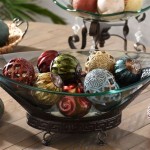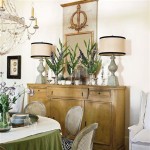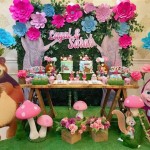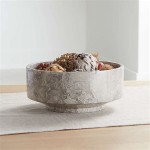Decorating With Branches and Twigs: Natural Elegance Indoors
Incorporating natural elements into interior design has steadily gained popularity, driven by a desire to connect with the outdoors and introduce organic textures and forms into living spaces. Among the most versatile and accessible of these elements are branches and twigs. Ranging from delicate, gracefully curved stems to substantial, gnarled boughs, branches and twigs offer countless possibilities for creative expression within the home.
The appeal of decorating with branches and twigs lies in their inherent beauty and adaptability. They can be sourced from one's own backyard, local parks (where permitted), or purchased from craft stores and nurseries. This accessibility, combined with the minimal processing required to prepare them for display, makes them a cost-effective and sustainable decorating choice. Furthermore, branches and twigs introduce a sense of the changing seasons, allowing for dynamic and evolving interior schemes throughout the year.
Sourcing and Preparing Branches and Twigs
The first step in successfully incorporating branches and twigs into decor is to procure suitable materials. Depending on the desired aesthetic, one may opt for freshly fallen branches, those that have been seasoned and dried naturally, or even branches that have been treated to achieve a specific color or texture. When gathering branches from natural sources, it is essential to adhere to local regulations and obtain permission if necessary. Avoid taking branches from living trees as this can harm the tree's health.
Once the branches have been collected, they require cleaning and preparation. This typically involves removing any loose debris, such as leaves, dirt, or insects. A stiff brush and a mild detergent solution can be used for thorough cleaning. After cleaning, the branches should be allowed to dry completely. This prevents mold growth and ensures the branches are stable for use in decor.
Consider the size and shape of the branches when selecting them for specific projects. Delicate twigs are ideal for creating intricate arrangements, while larger branches can serve as focal points or structural elements. It’s also beneficial to consider the type of tree the branch came from. Different species possess unique characteristics in terms of bark texture, branching patterns, and color, all of which can contribute to the overall aesthetic.
Depending on the intended use, branches may require further treatment. Applying a sealant or varnish can protect the wood from moisture and insects, while also enhancing its natural color and grain. Painting or staining branches can introduce new color palettes and textures to complement existing decor. However, preserving the natural appearance of the wood is often preferred, allowing its inherent beauty to shine through.
Creative Applications for Branches and Twigs
The possibilities for using branches and twigs in interior design are limited only by one's imagination. From simple vase arrangements to elaborate wall installations, these natural elements can be incorporated into various aspects of a home's decor. The following outlines several common and impactful applications.
One of the simplest and most effective uses for branches is in a vase or container. A collection of tall, slender branches can create a dramatic statement in a living room or entryway. Shorter, more delicate twigs can be arranged in smaller vases to add subtle natural touches to shelves, tabletops, or bedside tables. The type of vase or container used can significantly impact the overall aesthetic. Clear glass vases showcase the natural beauty of the branches, while ceramic or metal containers can add a touch of rustic charm or modern elegance.
Branches can also be transformed into stunning wall decor. Large branches can be mounted horizontally on a wall to create a sculptural element or a natural headboard in a bedroom. Smaller twigs can be arranged to form intricate patterns or silhouettes, adding texture and visual interest to a blank wall. Consider using branches to frame mirrors or artwork, creating a unique and organic border. These can be attached with nails, screws, or strong adhesive, depending on the weight and size of the branch.
Furthermore, branches and twigs can be repurposed to create functional items for the home. A sturdy branch can be used as a coat rack, providing a rustic and practical storage solution. Smaller twigs can be woven together to create baskets or decorative bowls. Even more ambitiously, larger branches can be incorporated into furniture design, such as tables or chairs, adding a unique and organic touch to the space.
Holiday decorations are another excellent opportunity to utilize branches and twigs. During the winter months, branches can be adorned with lights, ornaments, and other festive decorations to create a unique and natural alternative to a traditional Christmas tree. In the spring, flowering branches can be used to bring a touch of seasonal beauty indoors. These natural elements can add elegance and warmth to festive celebrations.
Maintaining and Preserving Branch Decor
While branches and twigs are relatively low-maintenance decorative elements, proper care is essential to ensure their longevity and prevent issues such as pest infestations or deterioration. Regular cleaning and occasional maintenance can keep branches looking their best for years to come.
Dust accumulation is a common issue with branches and twigs, particularly those displayed in open areas. Regularly dusting the branches with a soft cloth or a vacuum cleaner with a brush attachment will help maintain their appearance. For more stubborn dust or grime, a damp cloth can be used, ensuring the branches are thoroughly dried afterward.
Insect infestations are another potential concern, especially with branches sourced from natural environments. To prevent infestations, thoroughly inspect branches before bringing them indoors. If insects are discovered, the branches can be treated with an insecticide specifically designed for wood. Alternatively, heating the branches in an oven at a low temperature (around 200°F or 93°C) for a few hours can effectively kill any insects or larvae.
Protecting branches from excessive moisture is crucial to prevent mold growth and rot. Avoid placing branches in areas with high humidity or direct contact with water. If branches are used in arrangements with fresh flowers, ensure that the water level is kept below the wood to prevent it from becoming waterlogged. Applying a sealant or varnish can add an extra layer of protection against moisture damage.
Over time, branches may become brittle or faded due to exposure to sunlight. To minimize this, avoid placing branches in direct sunlight for extended periods. Rotating the branches periodically can also help ensure that they are evenly exposed to light and prevent uneven fading. If the branches start to show signs of wear and tear, consider refreshing them with a new coat of paint, stain, or sealant.
By following these simple maintenance tips, branches and twigs can continue to bring natural beauty and elegance to interior spaces for many years. The versatility and durability of these natural elements make them a worthwhile investment in creating a welcoming and aesthetically pleasing home environment.

Top 40 Decoration Made With Twigs And Branches Celebrations

45 Branch And Twig Decor Ideas Digsdigs

80 Outdoor And Indoor Decoration Ideas With Twigs Branches Tree Decor

15 Ways To Decorate With Twigs Inexpensive Simple Gorgeous

17 Best Table Decorations

Rustic Twig Tree Ornament On A Branch

How To Make Twig Decorations

3 Ways To Use Tall Decorative Branches In Home Decor

Home Styling Tips Using Foraged Sticks Twigs And Foliage Claire Douglas

13 Diy Branch And Twig Decorations For Spring Shelterness








